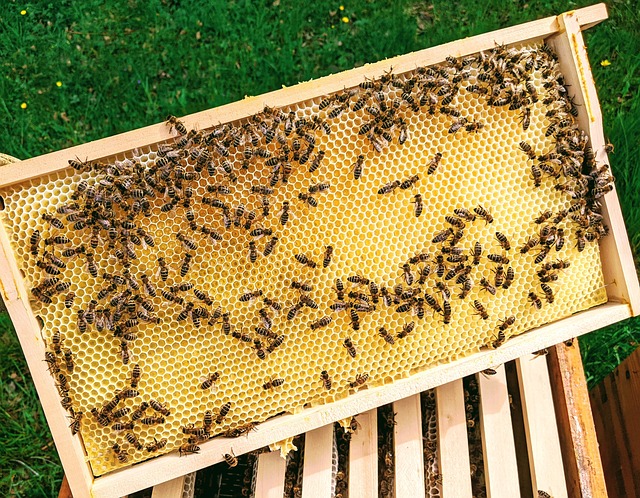Brazilian waxing is a popular yet myth-shrouded hair removal method. This text clarifies that it's safer than believed, with modern waxes and strict salon hygiene practices reducing pain and infection risks. Debunking pain exaggerations encourages informed decisions. Proper aftercare, including hydration and patience, ensures optimal results and minimizes discomfort. Choosing reputable salons committed to cleanliness is key.
“Uncover the truth behind Brazilian waxing with our comprehensive guide. Many myths surround this popular hair removal method, leading to misconceptions about hygiene, comfort, and aftercare. In this article, we debunk common myths, focusing on fact-based insights into the process. From understanding the importance of hygiene and safety protocols to addressing comfort levels and essential aftercare practices, we’ll equip you with knowledge to make informed decisions regarding your Brazilian waxing experience.”
Debunking Common Misconceptions About Brazilian Waxing
Many people have concerns or misconceptions about Brazilian waxing, often fueled by misinformation online. One common myth is that it’s an extremely painful process, but this isn’t entirely true. While it may induce a temporary stinging sensation, especially for first-timers, it’s not usually excruciating. Modern waxes and skilled technicians can make the experience much more bearable, often leaving clients surprised at how tolerable it is.
Another misconception is that Brazilian waxing is unhygienic or unsanitary. Professional salons adhere to strict hygiene standards, using sterile, single-use materials for each client to prevent any contamination. The skin is thoroughly cleaned before and after the procedure, minimizing the risk of infections or irritation. It’s essential to choose a reputable salon that prioritizes cleanliness to dispel these fears.
Hygiene and Safety: Separating Fact From Fiction
Brazilian waxing has gained popularity for its effectiveness in achieving smooth, hair-free skin. However, many myths surround this procedure, especially regarding hygiene and safety. It’s essential to separate fact from fiction to ensure a positive experience. Contrary to some beliefs, Brazilian waxing is generally safe when performed by a licensed and experienced professional using sterile equipment. The risk of infections is minimal if proper aftercare instructions are followed.
Hygiene during the procedure is paramount. Waxing salons should maintain high standards by regularly sanitizing their tools and work areas. Single-use materials for each client, such as wax strips and applicators, help prevent the spread of bacteria or viruses. Clients also play a crucial role in maintaining good hygiene by communicating any concerns or allergies to the technician before the treatment. Remember, choosing a reputable salon that prioritizes cleanliness is vital for a safe and hygenic Brazilian waxing experience.
Comfort and Pain: Challenging Popular Beliefs
Brazilian waxing has often been shrouded in myths, with many believing it’s an extremely painful procedure. While it’s true that any form of depilation can cause discomfort, the level of pain associated with Brazilian waxing is frequently exaggerated. Many users report that it’s no more painful than other common hair removal methods, such as shaving or using cream. In fact, with proper technique and a skilled professional, many individuals experience minimal to no pain at all.
Challenging these popular beliefs is crucial for demystifying Brazilian waxing. It’s essential to understand that comfort levels vary from person to person, just like any other cosmetic procedure. Modern waxes are also designed to be gentler on the skin, reducing discomfort and potential irritation. By addressing these myths directly, individuals can make more informed decisions about their hygiene routines and choose the best method for their needs without being deterred by false assumptions about pain levels.
Aftercare Practices: What You Need to Know
After a Brazilian wax, proper aftercare practices are essential for optimal results and minimizing discomfort. It’s crucial to avoid touching or irritating the treated area immediately post-waxing. This means refraining from using any products that may cause further sensitivity, including perfumes, lotions, or rough fabrics. Instead, opt for gentle, pH-balanced cleansers and cool compresses to soothe the skin.
Hydration is another vital aspect of Brazilian waxing aftercare. The skin may feel dry and irritated, so applying a moisturizing lotion or body butter designed for sensitive areas can help alleviate discomfort and promote healing. Remember, patience is key; it’s recommended to wait 24-48 hours before wearing tight clothing or engaging in strenuous activities to allow the skin to fully recover.
Brazilian waxing has evolved far beyond myths and misconceptions. By understanding the facts about hygiene, safety, comfort, and aftercare, you can make an informed decision that aligns with your personal needs and preferences. Remember, professional services adhere to strict hygiene standards, and proper aftercare practices ensure a smoother experience. Let’s dispel the myths and embrace this empowering beauty choice.
